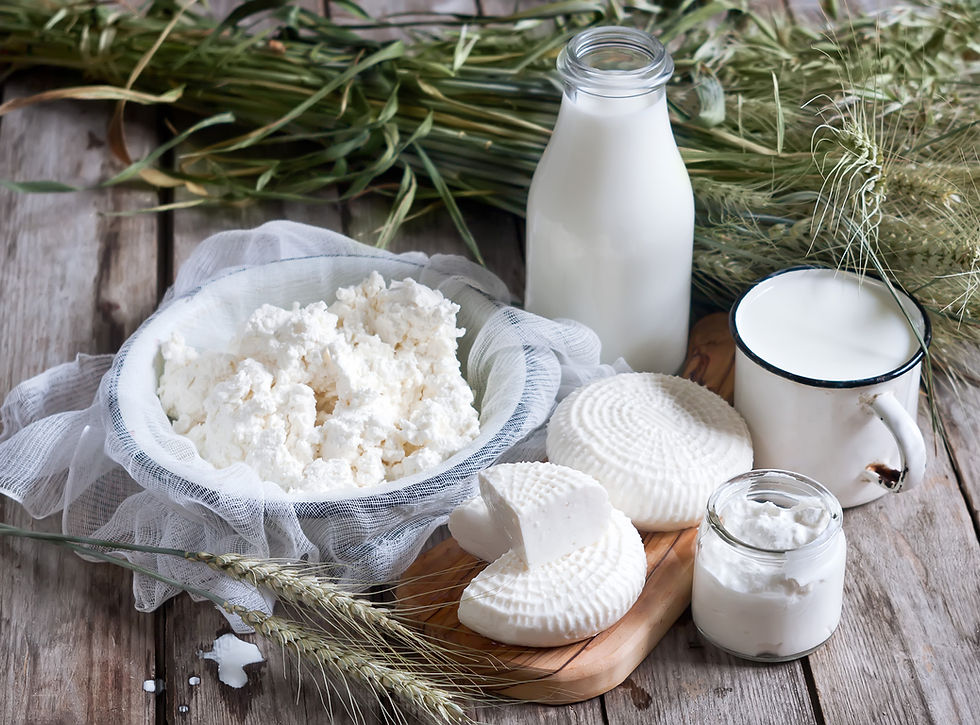Fed Truths or Lies: Natural vs. Artificial Flavors
- Isabelle

- Jul 16
- 3 min read
Artificial flavoring is ubiquitous in most food products on the food market. Originating from the high consumer demand for consistent flavoring that was agriculturally impossible to cultivate from natural ingredients, artificial flavoring has become one of the main sources of what we know as flavor today. Contrary to most beliefs, there are many common misconceptions about artificial flavorings, especially in comparison to natural flavorings. In reality, the barrier separating natural and artificial flavors is much smaller than most assume.
Engineering Natural and Artificial Flavoring
According to the FDA, artificial flavorings are substances not derived from plants, animals, or fermented products, that alter the flavor in food (Tilley Distribution, 2023). Natural flavorings, on the other hand, are extracted directly from plants, animals, and fermented products (“Natural and Artificial”, 2021).
One distinct flavor is composed of many different components. In order to make a comprehensive flavor profile, both natural and artificial flavors must undergo engineering processes. The term “natural” and “artificial” merely differentiate by the raw ingredients used to make them (Tilley Distribution, 2023). For example, natural lemon flavoring stems from citral, a chemical compound found in lemon peels, lemon myrtle, or even lemongrass. Artificial lemon flavoring is also made of citral, but the citral used originates from chemical isolates of previously inedible material (Huen, 2015). Vanilla is another example. Vanilla, being one of the most highly demanded flavors, often appears in its artificial flavor form. This is due to a key compound, called vanillin which is present and isolated from byproducts of the paper industry or petroleum (Lacy, 2024). Examples like lemon and vanilla show that the difference between the two flavoring styles lies purely in which ingredients were used to make them (Tilley Distribution, 2023).
Myths of Natural vs. Artificial Flavors
Myth: Artificial flavors are always harmful.
Reality: Many artificial flavors are deemed safe by food safety authorities. Companies are kept in check by intensive inspection from beginning to end of production. Additionally, during storage, meticulous sanitary conditions are maintained to ensure safe results (Tilley Distribution, 2023).
Myth: Natural flavors are healthier than artificial ones.
Reality: Flavor, in itself, does not contribute any nutritional value to food consumed. With natural and artificial flavorings often having exactly the same chemical structure, consuming one or the other will not provide nutritional benefits or damage (Tilley Distribution, 2023). To add on, despite many misconceptions that artificial flavorings are full of additives, natural flavors can also contain additives and be equally processed (“Natural and Artificial”, 2021).
Myth: Natural flavors are more sustainable than artificial flavors.
Reality: Natural components used to produce natural flavorings require significantly more energy for processing and time than it would take to use artificial materials. In fact, emissions from growing, transporting, and processing natural ingredients significantly exceeds artificial flavoring (Tilley Distribution, 2023).
Myth: Natural flavors are not chemically engineered at all, only artificial flavors are.
Reality: To make both natural and artificial flavors, molecular flavor engineers, known more formally as flavorists, first compile the combination of compounds found in a specific flavor. From that point forward, they match the chemical compounds responsible for each flavor with each other. Artificial flavoring is often the only accused flavoring source of “engineered flavor;” however, both natural and artificial flavoring undergo extensive engineering and food safety testing (“Natural and Artificial”, 2021).
Key Takeaways
Besides the initial ingredients used to make them, natural and artificial flavoring share much of the same manufacturing processes. Although there are other factors to consider when approaching different foods, whether a package is naturally or artificially flavored may not give a comprehensive understanding of the product and how it was made. To consider its origin and purpose, artificial flavoring is essentially a tool used to ensure optimal and consistent flavor sustainably, accessibly, cost effectively, and safely. By understanding the chemistry and manufacturing process, consumers can approach various foods with more discretion and knowledge.
References
Gritzer, D. (2025, May 5). Here’s Why Natural and Artificial Flavors Aren’t What They Seem. Serious Eats. https://www.seriouseats.com/natural-vs-artificial-flavors-11728636
Huen, E. (n.d.). What Manufacturers Really Mean By Natural And Artificial Flavors. Forbes. Retrieved July 13, 2025, from https://www.forbes.com/sites/eustaciahuen/2015/10/01/what-manufacturers-really-mean-by-natural-artificial-flavors-according-to-museum-of-food-drink/
Lacy. (2024, September 10). What’s Up With Artificial Flavors? Organic Authority. https://www.organicauthority.com/health/what-are-artificial-flavors
Natural and Artificial Flavors. (2021, July 26). https://nutrisci.wisc.edu/2021/07/26/natural-and-artificial-flavors/
Natural Vs. Artificial Flavors. (2021, April 21). Flavorman. https://www.flavorman.com/media/natural-and-artificial-flavors-how-are-they-different
Tilley Distribution. (2023, May 26). How Are Artificial Flavors Made? Tilley Distribution. https://www.tilleydistribution.com/insights/creating-artificial-flavors-the-science-of-good-taste/
Thumbnail image: (Gritzer, 2025)
_edited.png)





Comments